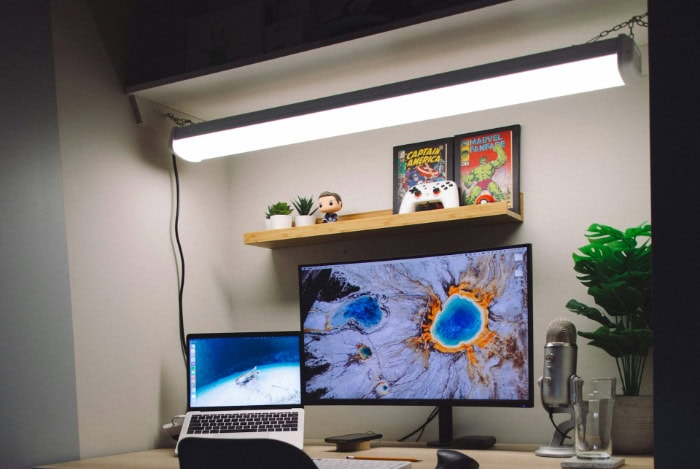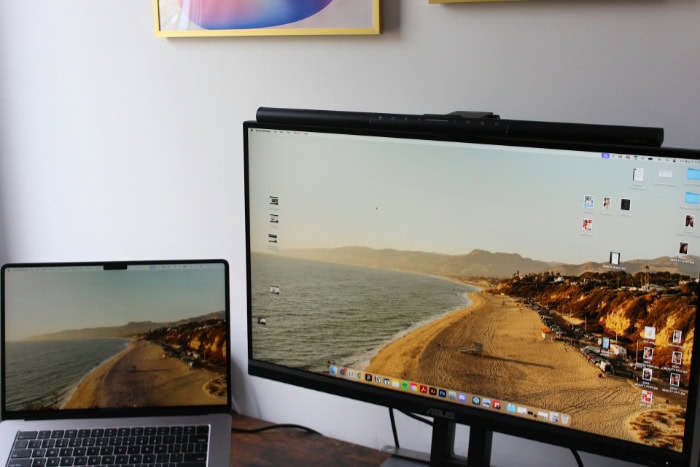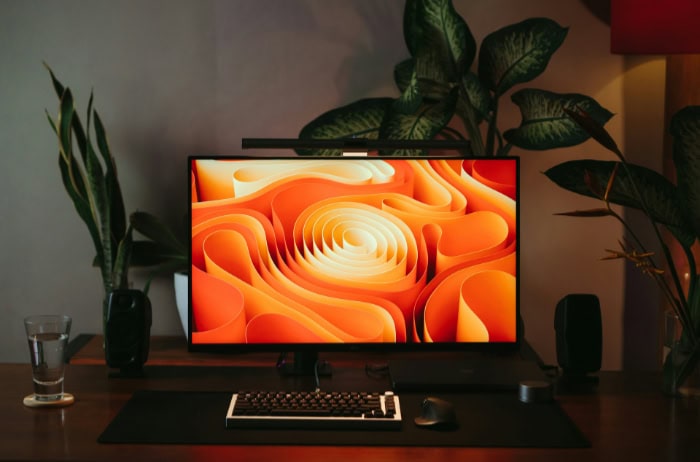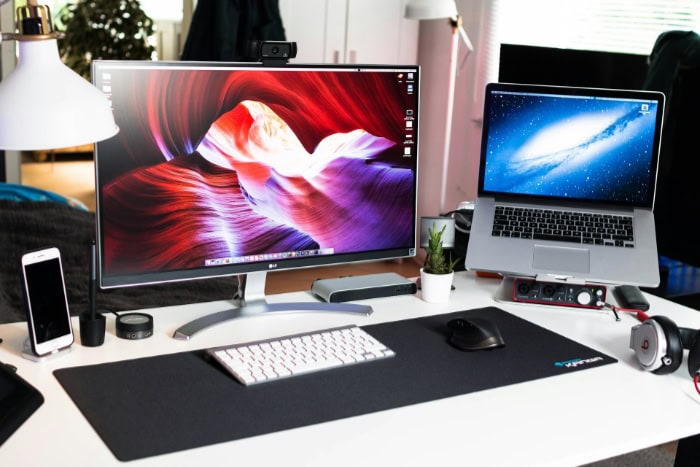TN vs. IPS vs. VA: How to Pick the Perfect Monitor Panel

Choosing the right monitor can make all the difference in your experience, whether you're a competitive gamer, a creative professional, or simply someone who enjoys watching movies. The world of LCD panels offers three main contenders—TN, IPS, and VA—each with its own strengths and weaknesses.
As these technologies continue to evolve, it's essential to know how they stack up in areas like performance, image quality, and cost.
Performance and Speed
Performance and speed are critical factors when choosing a monitor, especially if you're into fast-paced activities like gaming or intense multitasking. Two significant elements that affect a monitor's speed are response time and refresh rate.
These features determine how quickly your display can keep up with the action, which is essential for smooth and immersive experiences.
Response Time
Response time refers to how fast a pixel can change from one color to another, typically measured in milliseconds (ms). A lower response time results in less motion blur, making fast movements appear sharper and clearer.
This is particularly important in competitive gaming, where a fraction of a second can be the difference between winning and losing.
TN panels dominate the field when it comes to response times. They often boast speeds as low as 1ms, which is ideal for gamers who need rapid reactions without any hint of motion blur or ghosting.
The fast response time of TN panels ensures that even the most intense actions, like quick camera movements or fast-paced combat, are rendered without visual lag.
On the other hand, IPS panels historically had slower response times, but recent advancements have significantly improved their speed.
While not quite as fast as TN panels, modern IPS displays can now achieve response times of around 4ms, which is sufficient for most casual and immersive gaming experiences.
The improvement in IPS technology has made it a more viable option for gamers who value both speed and superior image quality.
VA panels, however, tend to lag behind in this area. Their response times are generally slower, often hovering around 5ms or higher, which can result in noticeable ghosting during fast-moving scenes.
For general use or casual gaming, this won’t be much of an issue, but for competitive gamers or those sensitive to motion artifacts, VA panels may not offer the same level of responsiveness as TN or modern IPS panels.
Refresh Rates
Refresh rate refers to how many times per second a monitor can redraw the image on the screen, measured in Hertz (Hz). The higher the refresh rate, the smoother the visual experience, which is particularly beneficial for gaming or watching fast-paced content like sports.
A higher refresh rate reduces screen tearing and makes fast movements appear more fluid.
TN panels are again a top performer in this category, offering some of the highest refresh rates available on the market. Monitors with TN panels can reach refresh rates of 240Hz or even higher, making them the go-to choice for competitive gamers who need every possible advantage.
The combination of high refresh rates and fast response times in TN panels results in a seamless and fluid gaming experience, where every frame counts.
IPS panels, while not quite as fast as TN, also offer competitive refresh rates. Many IPS monitors now support up to 144Hz, and some high-end models can even reach 240Hz, closing the gap with TN.
This makes IPS panels a solid choice for gamers who want high refresh rates without sacrificing image quality. The ability to combine vibrant color accuracy with smooth motion has made IPS panels increasingly popular among both casual and serious gamers.
VA panels typically fall between TN and IPS in terms of refresh rates, with most models offering refresh rates around 120Hz to 144Hz.
While this is still more than adequate for most users and even many gamers, VA panels usually don’t reach the ultra-high refresh rates seen in TN models.
However, for users focused on watching movies or playing slower-paced games, VA panels offer a good balance of speed and image quality.
Image Quality

When it comes to choosing a monitor, image quality plays a crucial role, especially for users engaged in activities like content creation, media consumption, or casual gaming. The quality of the visuals on your screen is affected by factors such as color accuracy and viewing angles.
These aspects determine how vibrant, sharp, and consistent the images appear, influencing everything from immersive movie experiences to precise photo editing.
Color Accuracy
Color accuracy refers to how closely the displayed colors match real-life hues or the intended colors in digital content.
This is particularly important for professionals in fields like photography, graphic design, and video production, where precise color representation is essential.
IPS panels are widely recognized for offering the best color accuracy among the three panel types. They deliver vibrant, true-to-life colors with a wide color gamut, making them the top choice for anyone who needs accurate color reproduction.
IPS monitors typically cover a broader range of color spaces, such as sRGB or AdobeRGB, which ensures that colors are represented faithfully, whether you're editing photos or working on a video project.
This superior color consistency makes IPS panels the go-to option for professional content creators who require reliable and precise visuals.
VA panels offer decent color accuracy but don’t quite match the consistency and vibrancy of IPS displays.
While VA panels can still produce rich colors, especially for general media consumption and casual use, they may struggle with color consistency across the screen, particularly in darker areas.
The colors in VA panels can sometimes appear less uniform, especially when viewed from off-center angles, which may make them less suitable for high-end color-sensitive work.
However, for most users, VA panels will still offer a good balance between color reproduction and other performance aspects, particularly in environments where deep contrast is more important than precise color accuracy.
TN panels are known for their limited color accuracy. This is due to the simpler technology used in TN displays, which can result in less vibrant colors compared to IPS and VA panels.
The color range of TN panels is often narrower, meaning certain shades may appear washed out or less accurate. For competitive gaming or general office use, this isn’t always a dealbreaker, but for tasks that require rich, true-to-life colors, TN panels fall short.
This makes TN panels less suited for content creation or any visual work where color fidelity is a priority.
Viewing Angles
Viewing angles refer to how well the image quality holds up when viewed from different positions.
A panel with poor viewing angles will show color shifts or contrast degradation when seen from the side, above, or below, which can be distracting if you move around a lot or if multiple people are viewing the screen at once.
IPS panels are the clear winner here, offering the widest viewing angles with minimal distortion.
Whether you’re looking at the screen dead-on or from the side, IPS panels maintain consistent color and contrast, making them ideal for collaborative work or environments where the screen might be viewed from multiple positions.
This feature is especially beneficial for designers, photographers, and anyone working with visuals, as it ensures that colors and details remain accurate no matter where you’re sitting. IPS panels generally offer viewing angles up to 178 degrees, which means the image remains consistent from almost any angle.
VA panels provide moderate viewing angles, better than TN but not as strong as IPS. While VA panels usually maintain contrast fairly well, they can suffer from some color shifting when viewed from extreme angles.
This means that while the central image may appear sharp and vibrant, colors and brightness can fade or distort when viewed from the sides.
For solo users who are mostly positioned directly in front of the screen, this may not be an issue, but it can be a drawback in group settings or when moving around while watching content.
TN panels offer the narrowest viewing angles of the three technologies. Even a slight shift in your position can cause noticeable color and contrast changes, with colors washing out or appearing inverted when viewed from the side.
This makes TN panels less ideal for any scenario where you’re not directly in front of the screen, especially if you frequently move around or share the screen with others.
The narrow viewing angles are a significant trade-off for TN’s superior speed, making it less suitable for tasks where color consistency across a wide range of angles is important.
Contrast and Black Levels

When evaluating a monitor’s image quality, contrast and black levels are major factors that determine how well the display performs in darker scenes and how much visual depth the image contains.
A high contrast ratio enhances the separation between light and dark areas, making images appear more detailed and realistic, while deep black levels contribute to a more immersive experience, especially in low-light environments.
TN, IPS, and VA panels each handle these aspects differently, giving users various experiences depending on the panel type.
Contrast Ratios
Contrast ratio measures the difference between the brightest whites and the darkest blacks a monitor can produce. A higher contrast ratio results in richer, more detailed images, especially in scenes with a wide range of lighting conditions.
This is particularly important when watching movies, playing games with dark environments, or working with HDR content.
VA panels stand out for their exceptional contrast ratios, often reaching 3000:1 or higher. This makes VA panels highly effective at delivering deep blacks and bright whites, giving images a sense of depth and realism that is hard to beat.
This higher contrast performance is especially useful in cinematic content or games with dark scenes, where the ability to discern shadows and fine details can make a big difference.
For users who prioritize contrast—whether for watching movies, playing atmospheric games, or enjoying HDR content—VA panels are often the best choice.
IPS panels, while generally superior in other aspects of image quality, tend to offer more moderate contrast ratios, typically around 1000:1.
This means that blacks on IPS panels may not appear as deep, and the overall contrast between light and dark areas is less pronounced than on VA panels.
Another issue with IPS technology is the phenomenon known as “IPS glow,” where light leaks from the corners of the screen, further diminishing the perceived black levels and overall contrast.
While IPS displays still perform well for most tasks, those who frequently work in dark environments or watch content with lots of dark scenes may notice the lack of depth compared to VA monitors.
TN panels generally have the lowest contrast ratios, often around 600:1 to 1000:1. This results in flatter-looking images, with less distinction between the brightest and darkest parts of the screen.
In dark scenes, TN panels can struggle to display fine details, and blacks may appear more like dark grays. While this shortcoming isn't as noticeable in brightly lit environments, it can be a significant drawback for users who watch movies, play games with a lot of shadowy areas, or work in darker rooms.
For these types of tasks, TN panels are not ideal if contrast and image depth are priorities.
Black Levels
Black levels refer to how well a monitor can render dark or black areas of an image. A display with good black levels will make dark scenes look more realistic, with deep, inky blacks rather than washed-out grays.
This is especially important for watching movies, playing games in dimly lit environments, or working with high-contrast imagery.
VA panels excel when it comes to black levels, largely due to their high contrast ratios. They are capable of producing deep, true blacks, even in the darkest scenes.
This makes VA panels particularly well-suited for users who often watch movies or play games with a lot of dark content, as the deep blacks contribute to a more immersive experience.
VA panels also tend to perform better in low-light environments, where their ability to maintain dark tones without washing them out sets them apart from IPS and TN panels.
IPS panels, while excellent in color reproduction and viewing angles, struggle with black levels due to the aforementioned “IPS glow” and their lower contrast ratios.
When viewed in a dark room, backlight bleeding can become noticeable, where light leaks from the edges of the screen, causing black areas to look more like dark gray.
This prevents IPS displays from achieving the same level of immersion in darker scenes, and for users who prioritize deep blacks, this can be a significant drawback.
While still usable for most tasks, IPS panels are not the best choice for those who place a high value on black level performance in dark environments.
TN panels perform the worst in terms of black levels. Due to their limited contrast ratios, TN panels cannot produce deep blacks.
In darker scenes, blacks often look washed out, appearing more like shades of gray.
This issue is compounded in low-light conditions, where TN panels’ inability to display true blacks becomes more apparent.
For tasks requiring high contrast and deep black levels—such as watching movies, gaming in dark environments, or working with high-contrast imagery—TN panels are less than ideal.
Cost Considerations

When shopping for a monitor, the type of panel technology used plays a significant role in determining the price. Budget constraints often force people to weigh the benefits of performance, image quality, and special features against the cost.
TN, IPS, and VA panels each come with different price points based on their capabilities and intended use.
Price Differences
The price of a monitor can vary considerably depending on the panel type, and it's essential to understand why these differences exist. The cost largely reflects the complexity of the technology involved and the performance features that each type of panel offers.
TN panels are the most affordable option on the market. Their simpler design and lower manufacturing costs make them a popular choice for budget-conscious buyers.
Although TN panels are known for their fast response times and high refresh rates, they compromise on image quality, with limited color accuracy, narrower viewing angles, and lower contrast ratios.
This makes them an attractive option for competitive gamers who prioritize performance speed over visual fidelity. However, for users focused on content creation or general media consumption, the lower image quality might be a drawback.
IPS panels tend to be the most expensive of the three. The higher cost is driven by their superior color accuracy, wider viewing angles, and better overall image quality.
IPS technology is more complex, requiring advanced backlighting and pixel control to achieve its characteristic vibrant colors and consistent picture quality from various viewing angles. These features make IPS panels particularly appealing to professionals in fields like graphic design, photography, and video editing, where color accuracy is essential.
However, the additional cost may not be justified for casual users or gamers who don't need such high levels of image precision.
VA panels sit in the middle range in terms of pricing. They offer a balance between the affordability of TN panels and the image quality of IPS panels.
While not as color-accurate as IPS, VA panels still provide better contrast ratios and deeper black levels, making them a solid choice for users who prioritize media consumption, such as watching movies or playing immersive games.
The moderate pricing makes VA panels a versatile option for those who want a good mixture of performance and image quality without the premium cost associated with IPS technology.
Value for Money
The concept of value for money depends heavily on the specific use case, as different users prioritize different aspects of a monitor’s performance.
For some, high refresh rates and low response times are critical, while others may be more interested in color accuracy or contrast for media consumption or work.
For competitive gamers, TN panels offer the best value. Their fast response times and high refresh rates allow for smooth, lag-free gaming at a fraction of the cost of an IPS or VA monitor.
While TN panels lack in image quality, the trade-off is worth it for gamers focused on performance rather than visuals. These panels provide an affordable route to high-performance gaming, with minimal motion blur and ghosting.
For content creators, the higher investment in an IPS panel is often justified by the superior color accuracy and wide viewing angles. The detailed color reproduction makes IPS monitors ideal for tasks like photo editing, graphic design, and video production.
While the upfront cost is higher, the long-term benefits of accurate color rendering make IPS panels the best choice for professionals who rely on precision in their work. For creative professionals, the added expense is a necessary investment to ensure their visual work is represented faithfully.
For general media consumption, such as watching movies or casual gaming, VA panels strike the best balance between cost and performance. Their superior contrast ratios and solid black levels make them perfect for immersive experiences in darker environments.
VA panels offer a good compromise between the budget-friendly TN panels and the more expensive IPS options, delivering better overall image quality without the steep price tag. This makes VA panels a strong contender for users seeking good performance for a variety of activities, without having to pay a premium.
Use Case Suitability

Choosing the right monitor involves more than just looking at specifications—it depends heavily on how you plan to use it. The three major panel types—TN, IPS, and VA—each have strengths that make them more suitable for certain activities.
Whether you're a competitive gamer, a content creator, or someone who enjoys watching movies, the performance characteristics of these panels will affect your experience.
Gaming
Gaming is one of the most demanding activities for a display, pushing monitors to their limits in terms of speed, responsiveness, and image quality.
The type of panel you choose can significantly impact your gaming experience, depending on what you prioritize—whether it’s performance speed for competitive play or immersive visuals for casual gaming.
Competitive gaming places a premium on speed, and this is where TN panels excel. The ultra-fast response times (sometimes as low as 1ms) and high refresh rates (up to 240Hz or more) make TN panels the top choice for gamers looking to minimize input lag and motion blur.
In fast-paced games like first-person shooters or esports titles, the ability to react quickly can make all the difference. TN panels deliver the performance needed to ensure that every millisecond counts.
However, the trade-off is in image quality—TN panels typically have weaker color reproduction and narrower viewing angles. For gamers who prioritize speed above all else, though, these compromises are often worth it.
On the other hand, casual or immersive gamers may prefer IPS or VA panels.
IPS panels offer a more visually rich experience with superior color accuracy and wide viewing angles, making them a great option for gamers who enjoy visually stunning environments or story-driven games.
The colors on an IPS panel are more vibrant, and the viewing experience is consistent across different angles, making it ideal for games with immersive worlds and detailed graphics.
VA panels, while not as fast as TN, provide a good balance between speed and image quality.
They also offer excellent contrast ratios, which enhances darker scenes, making VA panels a suitable choice for gamers who enjoy visually intense, atmospheric games.
For those who don’t require the fastest response times but want a richer, more engaging experience, IPS and VA panels are the better options.
Content Creation (Photo/Video Editing)
For professionals engaged in photo or video editing, color accuracy and viewing angles are non-negotiable.
The ability to represent colors correctly is crucial when working with images or videos, and any distortion in color or contrast can lead to incorrect edits that look different on other displays or in print.
This is why IPS panels are the go-to choice for photographers, video editors, and designers.
IPS technology excels in delivering accurate, vibrant colors and offers wide color gamut support, allowing professionals to work confidently, knowing that the colors they see on the screen are true to life.
Whether editing high-resolution photos or working with 4K video content, the color consistency of IPS panels across different viewing angles ensures that the work remains accurate, even when viewed from different positions.
The viewing angles also allow for collaborative work, as multiple people can view the screen simultaneously without experiencing color shift or distortion.
While VA panels can offer decent color accuracy, they don’t match the precision of IPS panels, especially when viewed from an angle.
TN panels, with their more limited color range and narrower viewing angles, are not typically recommended for professional content creation work where color fidelity is crucial.
For anyone serious about visual work, an IPS panel is the clear choice, despite its higher cost.
General Media Consumption (Movies/TV)
For watching movies or TV shows, contrast and black levels play a significant role in the viewing experience. Dark scenes need to appear rich and detailed, and a high contrast ratio helps to make the picture feel more immersive.
Whether you're watching the latest blockbuster or binging a series, the ability to display deep blacks and bright highlights enhances the overall visual quality.
This is where VA panels shine. VA technology is known for its superior contrast ratios, often exceeding 3000:1, which allows for deeper blacks and more detailed shadows in darker scenes.
This makes VA panels the ideal choice for users who prioritize strong contrast and want a cinematic experience at home.
For watching movies in a dark room, the deep blacks provided by VA panels can make a noticeable difference, offering a more engaging and visually dynamic experience.
IPS panels, while excellent in color accuracy, struggle with contrast and black levels due to lower contrast ratios and issues like IPS glow, where light bleeds from the edges of the screen.
While IPS panels are still suitable for general media consumption, they may not provide the same level of immersion in darker scenes as VA panels. TN panels, with their even lower contrast ratios and poor black levels, are the least suitable for movie watching, as dark scenes can appear washed out, and fine details in shadowy areas may be lost.
For users who want the best possible experience when watching movies or TV shows, VA panels offer the best balance of performance and price.
They may not match the color accuracy of IPS panels, but their contrast and black levels make them the superior choice for media consumption, especially in darker viewing environments.
Conclusion
Selecting the right monitor panel depends largely on what you prioritize in terms of performance, image quality, and cost.
TN panels offer unmatched speed, making them ideal for competitive gamers who need fast response times and high refresh rates, but they come with compromises in color accuracy and viewing angles.
IPS panels deliver the best color reproduction and wide viewing angles, making them a favorite among content creators, but their moderate contrast and black levels might not be the best for dark environments.
VA panels, meanwhile, strike a balance between the two, offering superior contrast and black levels, which make them great for media consumption and immersive gaming, though their response times aren't as fast as TN, and their color accuracy isn't as sharp as IPS.
Each panel type serves different purposes, so the best choice depends on your specific needs, whether it’s for fast-paced gaming, professional content creation, or enjoying movies at home. Balancing your budget with your performance requirements will help guide you toward the panel that suits you best.


